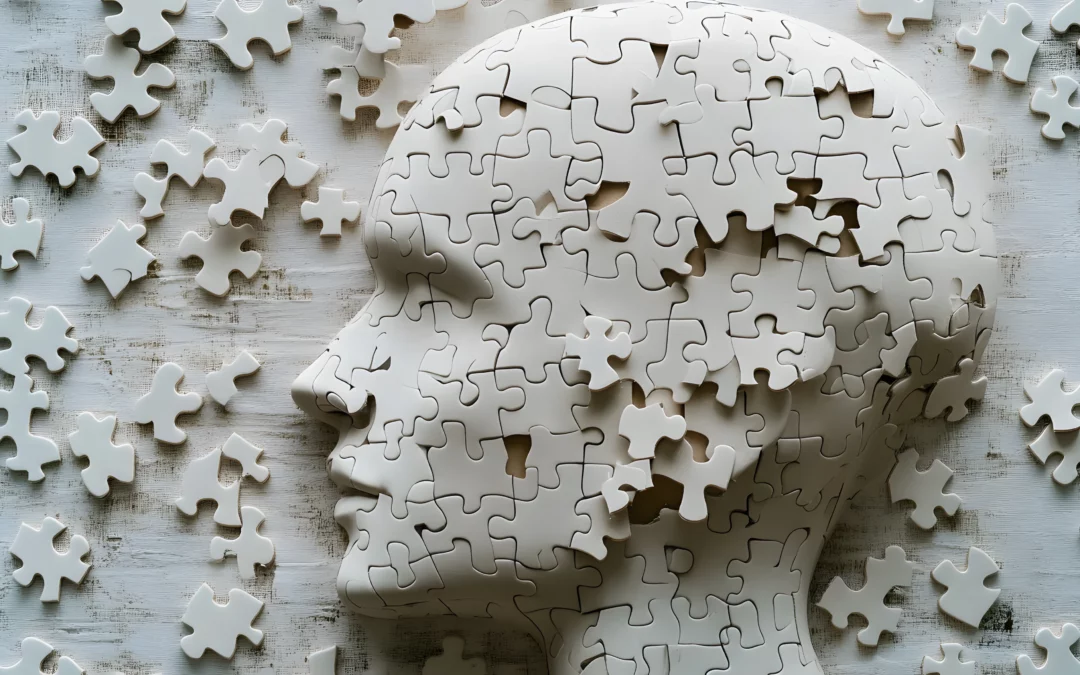Dialectical Behaviour Therapy (DBT) functions as a talk therapy method which teaches people skills for emotional regulation and interpersonal relationships. The therapy uses cognitive methods and behavioral approaches alongside mindfulness teaching. Patients learning DBT receive four dimensions of skills including emotion regulation and distress tolerance together with interpersonal effectiveness and mental awareness.
Psychologist Marsha Linehan developed DBT during the late 1980s. The therapy originally built to treat borderline personality disorder patients now supports patients with mood disorders and those who self-harm.
DBT differs from CBT because it encourages emotional acceptance and goal-oriented practice but CBT focuses only on thought alteration. The combination of emotional acceptance with transformative change makes DBT suitable for individuals who need assistance with emotional management or relationship skills.
What are the Core Principles and Philosophy of DBT?
The following are the 3 main principles and philosophical foundations of Dialectical Behavior Therapy:
- Dialectics
- Biosocial Theory
- Validation & Mindfulness
Dialectics
In dialectics both opposing ideas maintain their validity. The therapy concept at DBT uses the dialectic approach to help clients understand their present situation while developing healthier choices. The dialectical balance provides clients with mental adaptability and controls their intense emotional responses. When clients understand multiple perspectives through dialectical approaches they develop composure instead of showing impulsive reactions. The fundamental basis of DBT structured therapy rests upon dialectical principles which enable growth and allow for better communication and self-aware knowledge.
Biosocial Theory
The biosocial theory shows that emotional sensitivity occurs through genes and unsupportive living circumstances. People experience extreme stress reactions due to genetic factors but their environment fails to recognize their emotional needs. Such conditions generate regular instances of deep emotional states combined with deficient emotional control mechanisms. DBT functions through two aspects that combine emotional validation with practical learning of coping mechanisms. This theory provides an understanding of why particular people struggle with emotional control.
Validation & Mindfulness
Validation demonstrates an understanding of human emotions by accepting their reality and by acknowledging their natural occurrence. During treatment in DBT patients receive support that makes them feel respected. Through the practice of mindfulness, people develop a skill set to remain focused on the present moment while monitoring their thoughts without prejudice. Both these skills enable a better understanding of emotions and help control sudden responses. Clients develop improved recognition of their emotional reactions and responses. The main therapeutic model of DBT rests upon validation and mindfulness which promotes acceptance together with reduced emotional suffering.
Who Can Benefit from DBT?
These are the 4 groups that often benefit from DBT:
- Borderline Personality Disorder
- Emotional Instability
- Self-Harm & Suicidality
- PTSD, Depression, Eating Disorders
Borderline Personality Disorder
The developers designed DBT to assist people diagnosed with Borderline Personality Disorder. People who use DBT manage their changing moods and irregular interpersonal connections while controlling their overpowering emotional responses. Through this therapy, clients gain skills to control their responses, stop dangerous behaviours and improve conversational abilities. DBT delivers organization combined with supportive measures along with specific methods to manage emotional distress. Through therapeutic methods, patients learn to achieve emotional stability, become more aware of themselves and build better relationships leading to enhanced daily performance and enhanced life quality.
Emotional Instability
The condition affects emotional stability by generating irregular changes in mood and by creating problems with stress management. People can use DBT techniques to gain control over emotions and develop both emotional understanding and trigger response abilities. The program teaches clients to observe their responses and perform actions with considered intentions. The developed skills create an emotional steadiness that decreases upsetting interpersonal situations. The formatted structure of DBT allows people to build strength and master their reactions during difficult circumstances.
Self-Harm & Suicidality
When people face difficulties with self-harm and thoughts of harming themselves DBT provides alternative safe coping mechanisms through its lessons. The treatment method teaches patients to manage emotions alongside crisis management and build feelings of positivity. The process helps clients convert dangerous conduct patterns into wellness-oriented response systems. Through validation procedures and fault checks, the structured method makes a meaningful contribution to sustainable development. Through DBT clients gain exposure to a protected environment where they can share freely and master alternative methods for guiding severe emotional distress.
PTSD, Depression, Eating Disorders
The therapy helps patients suffering from depression and PTSD in addition to eating disorders through its treatment of emotional distress while targeting destructive behaviours. The protocol helps patients learn essential coping strategies for managing distress while guiding them to transform harmful thoughts with better relationship practices. The therapy method combines systematic elements with mindfulness practices while providing emotional care for the clients. The clients learn better reaction management and avoid it less frequently. The practice of DBT teaches patients to become good practitioners of mental wellness through their daily practices that enhance life quality and emotional wellness.
What are the Benefits & Limitations of DBT?
The following are the 4 key benefits and limitations of DBT:
- Emotional Regulation
- Practical Coping Skills
- Requires Commitment
- Not for Everyone
Emotional Regulation
Emotional regulation functions as the primary advantage that DBT delivers to its participants. DBT facilitates clients to identify their emotions and develop mechanisms to control them. The skills teach people to balance their intense emotions while developing level reactions. The training helps people to control unexpected actions and develop enhanced communication methods. The ability to regulate emotions helps people make better decisions and enables them to resolve fewer conflicts affected by their moods. Using DBT tools allows clients to achieve emotional equilibrium which enables them to maintain control and stability during chaotic emotional experiences.
Practical Coping Skills
The training provided by DBT directly relates to real-world functions in daily life. The mindset of mindfulness, the ability to handle distress and effective communication capabilities form part of this DBT approach. Regular practice of skills prepared by clients enables them to handle situations that create stress while managing their emotions and developing better relationship practices. The program uses itself directly to practical situations beyond theoretical understanding. DBT achieves excellence in emotional suffering reduction while building stability for its clients. These tools exist in a practical form which leads to both sustained change together with enhanced emotional self-control.
Requires Commitment
A commitment to putting in time and making consistent efforts defines DBT. Clients need to attend scheduled appointments and finish their assignments while they practice their learned skills between sessions. The structure provides progress support, but strong motivation is essential. People who are dedicated to DBT protocols will typically achieve the best outcomes. Through individual and group skills training, the therapeutic framework delivers a comprehensive experience. Patient dedication boosts the therapeutic effects that treatment produces.
Not for Everyone
DBT treatment does not offer suitable solutions for all patients. The formal approach with a skill-centered design creates discomfort for certain patients. Some clients require different therapeutic approaches to achieve insight-based or open-ended therapy. Participation in DBT needs to be active while patients must follow it regularly. The approach works best with participants who adopt its structured program. To reach effective therapeutic outcomes it is essential to combine treatment methods with patient requirements.
What to Expect in Chania?
Below are the 3 key features of DBT sessions in Chania:
- Skills-Focused Sessions
- Assignments & Diary Cards
- Therapist as Coach
Skills-Focused Sessions
The DBT sessions in Chania focus on developing and practising emotions together with interpersonal skills. The sessions focus on teaching one to multiple important core components like mindfulness and distress tolerance. Therapists give step-by-step instructions together with examples and feedback to clients. Clients use attained tools in their everyday life activities. The primary goal centres on addressing actual problems while developing client self-assurance. Therapists provide a framework and constant support to aid patients in developing emotionally with better behaviours.
Assignments & Diary Cards
Diary cards together with assignments serve to monitor progress while helping clients learn by application. Clients maintain records of their emotional states alongside behavioural patterns as well as urges that occur during periods between sessions. The approach helps both accountability and pattern recognition. Clients actively have opportunities to use their learned skills in their everyday lives through assignments. The review of diary cards within sessions allows clients to set goals that will keep them focused. These therapeutic tools maintain order in sessions thus enabling mutual understanding between therapists and clients.
Therapist as Coach
A therapist in DBT actively supports clients while guiding them as a coach. Clients receive guidance and feedback as their therapist supports them to practice skills in authentic environments. Partnering with the client requires mutual trust and collaborative work habits. Treatment sessions include building structure alongside recognition of clients’ realities. The supportive method helps decrease client shame and boost their motivation. Therapist support enables clients to build strength as well as gain deeper insights and achieve consistency at every stage.





